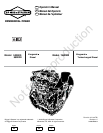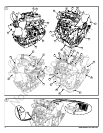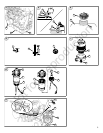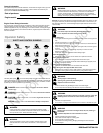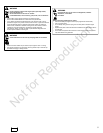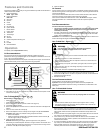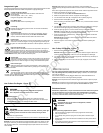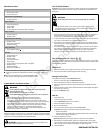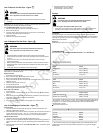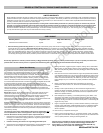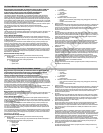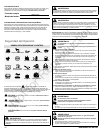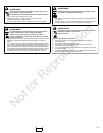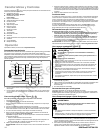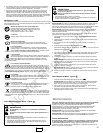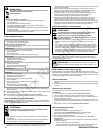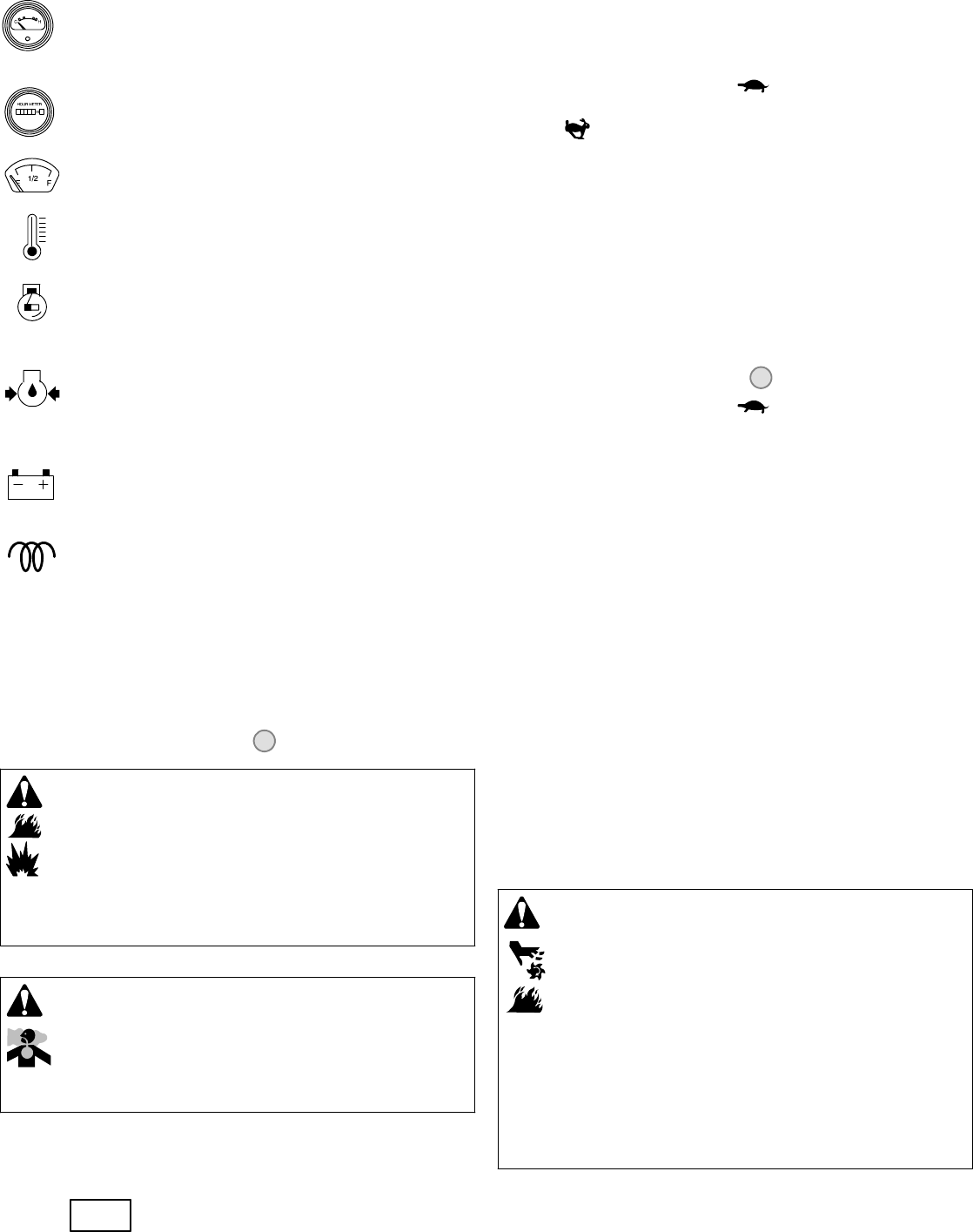
7
en
Gauges And Lights
The gauges and lights shown are typicaland represent various options that can be used.
See the equipmentmanual for location and operation of gauges and lights.
Coolant Temperature Gauge
Indicates coolant temperature when the electric start switch is in
the ON position.
Normal range 80º -- 90º C (175º -- 195º F)
Dangerous range above105º C (220º F)
Hour Meter Gauge
Indicates the totalnumber of operating hours.
Fuel Gauge
Indicates the fuelremaining in the fuel tank. To minimize condensation,
keep the f uel tank full.
Temperature Light
If the temperature light comes on, the engine is overheating. Stop the
engine and check the coolant level (see the How To Check Coolant
section). Check the radiator for debris that couldrestrict air flow.
Ignition Light
When the electric start switch is turned to the ON position,the ignition light
should be on. When the engine is running, theignition light should go out.
If the ignitionlight is out when then electric startswitchintheONposition, checkf or a
blown fuse.
Engine Oil PressureLight
When the electric start switch is turned to the ON position, the engine oil
pressure light shouldbe on. When the engine is running, the engine oil
pressure light should go out. If the engine oil pressure light comes on when the engine
is running, immediately stop the engine. First, check the oil level (see the How To
Check/Add Oil section). Next, check the electrical system.
Charge Light
When the electric start switch is turned to the ON position, the charge light
should be on. When the engine is running, thecharge light should go out.
If the charge light comes on when the engineis running, check the electrical system.
Heat or Glow Light
When the ignition switch is turned to the heat/glow or the on position, the
glow light will indicate to indicate that the glow plugs are preheating the
combustion chamber.
Fuel Filter Light
The fuel filterlight comes on when excess water hascollected in the fuel
filter. The light should go out when the excess water is drained from the
fuel filter. I f the fuel filter warning light illuminates while engine is running, stop the engine
and drain the water from the fuel filter .
X
How To Start The Engine - Figure
6
WARNING
Fuel and its vapors are extremely flammable and explosive.
Fire or explosioncan cause severe burns or death.
When Starting Engine
• Ensure that muffler, fuel cap, and air cleaner are in place and secured.
• To prolong starter life, use short starting cycles, notto exceed 15 seconds per
minute. Extended crankingcan damage the starter motor.
Engines give off carbon monoxide, an odorless, colorless, poison gas.
Breathing carbon monoxide can causenausea, fainting or death.
WARNING
• Start and runengine outdoors.
• Do not start or run engine in enclosed area, even if doors or windows are open.
NOTICE: This engine was shipped from Briggs &Stratton without oil. Beforeyou start
the engine, makesure you add oil according to the instructions in this manual. If you
start the engine without oil, it will bedamaged beyond repair and will not becovered
under warranty.
NOTICE: Before starting the engine for the first time, charge thebattery as
recommended by theequipment manufacturer. Failure todo so can causedamage to the
engine.
Note: Some engines and equipment have remote controls. See the equipment manual
for location and operation of remotec ontrols.
1. Check the oil level. See the How To Check/Add Oil section.
2. Make sure equipment drive controls, if equipped, are disengaged.
3. Turn the fuel shut -off valve (A), if equipped, to the on position (Figure 6).
4. Move the throttle control (B) to the slow
position.
Note: For starting in cold weather (below -10º Cor14º F), move the throttle control to
the fast
position.
5. Turn the electric start key (C) to the ON or HEAT position (Figure 6). The glow light
will indicate that the glow plugs are preheating the combustion chamber.
6. When the glow light goes out, turn the electric start key to the START position.
NOTICE: To prolong starterlife, use short starting cycles, not to exceed 15 seconds
per minute. Extendedcranking can damage the starter motor.
7. When the engine starts, release the key. The glow light will illuminate for about 20
seconds and thengo out.
NOTICE: Do not accelerate or race a cold engine. Failure to observe this caution
can cause enginedamage.
8. Allow the engine to run and warm up fors everal minutes before operating the
equipment.
How To Stop The Engine - Figure
6
1. Move the throttle control (B) to the slow position.
NOTICE: Before stopping a turbo-equipped engine, allow the engine to idle for one
minute to cool the turbocharger. Failure to do so can damage the turbocharger.
2. Turn the key switch (C) to the off position (Figure 6). Remove the key and keep in a
safe place out of the reach of children.
3. After the engine stops, turn the fuel shut-off valve (A), if equipped, to the closed
position.
Maintenance
Use only original equipment replacement parts. Other partsmay not perform as
well, may damage the unit, and may result in injury. In addition, use of other parts
may void your warranty.
We recommend that you see any Briggs & Stratton 3/LC Authorized Dealer for all
maintenance and service of the engineand engine parts.
NOTICE: All the components used to build this engine must remain in place for proper
operation.
NOTICE: The manufacturer of the equipment on which this engine is installed specifies
the top speedat which the engine will be operated. Do not exceed this speed.
Emissions Control
Maintenance, replacement, or repair of the emissions control devices and systems
may be performed by any non-road engine repair establishment or i ndividual.
However, to obtain“no charge” emissions control service, the work must be performed
by a factory authorized dealer. See the Emissions Warranty.
Unintentional start-up can result inentanglement, traumatic
amputation, or laceration.
Fire hazard
WARNING
Before performing adjustments or repairs:
• Disconnect battery at negative terminal (only engines withelectric start.)
• Use only correct tools.
• Do not tamperwith governor spring, links or other parts to increase engine
speed.
• Replacement parts must be the same and installed in the same position as the
original parts.
• Do not strikethe flywheel with ahammer or hard object becausethe flywheel
may later shatterduring operation.
Not for Reproduction



